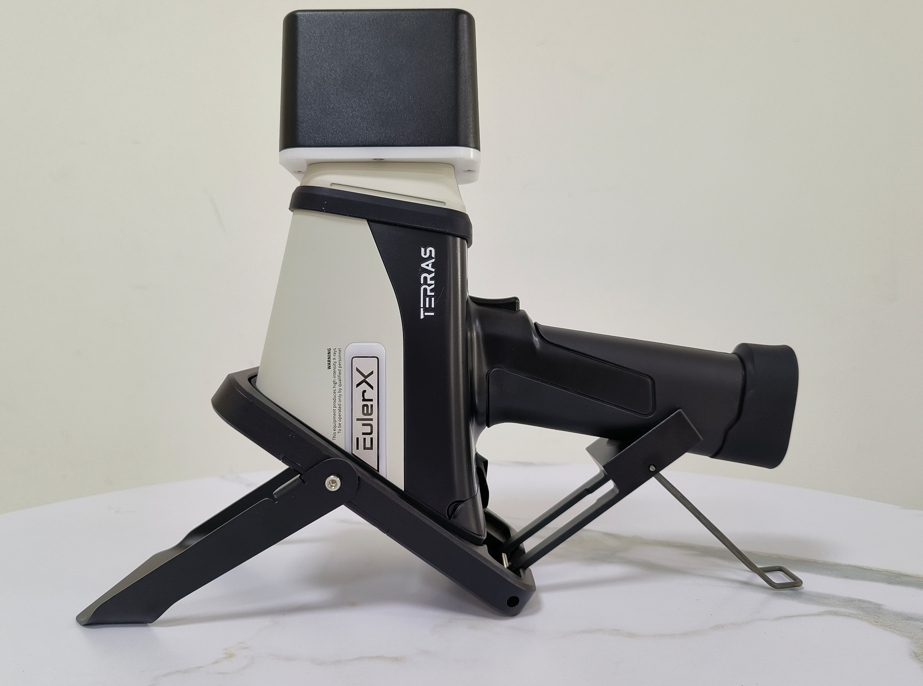
Alloy
A high-tech enterprise focusing on the development and application of X-ray technology products, committed to becoming a leading supplier of X-ray industrial testing solutions.
Understanding the Technology Behind XRF Handheld Scanners: A Deep Dive
In the world of material analysis and environmental testing, XRF (X-ray Fluorescence) handheld scanners have emerged as indispensable tools for professionals across various industries. Whether in mining, recycling, manufacturing, or environmental monitoring, XRF technology provides rapid, non-destructive, and accurate elemental analysis of materials. But what exactly is XRF technology, and how do handheld XRF scanners work? In this blog, we’ll take a deep dive into the technology behind XRF handheld scanners and explore their functionality, benefits, and applications.
What is XRF Technology?
X-ray Fluorescence (XRF) is an analytical technique used to determine the elemental composition of materials. When an object or substance is exposed to high-energy X-rays, the atoms within the material absorb this energy, causing them to emit secondary X-rays (fluorescence). These emitted X-rays are characteristic of the elements present in the sample, and by measuring their energy levels and intensities, it’s possible to identify and quantify the elements in the material.

Terras EulerX900 Handheld Alloy Analyzer
How Do Handheld XRF Scanners Work?
Handheld XRF scanners are compact devices that integrate the principles of XRF technology into a portable form. These devices typically consist of a small X-ray tube, a detector, and a processing unit. Here's a breakdown of how they work:
X-ray Emission: When the handheld XRF scanner is directed at a sample, the device generates a focused X-ray beam that is aimed at the surface of the material. This high-energy X-ray beam excites the atoms in the sample, causing them to release secondary X-rays (fluorescence).
Detection of Fluorescence: The emitted X-rays are captured by the detector in the handheld scanner. The detector measures the energy and intensity of the fluorescence, which corresponds to specific elements within the sample.
Analysis and Results: The scanner’s processing unit analyzes the detected X-rays and compares them to a database of known elemental signatures. It then identifies the elements present and calculates their concentrations, often providing results in real-time on the device’s display.
Components of a Handheld XRF Scanner
A handheld XRF scanner is a finely tuned system with several key components that work together to perform rapid material analysis:
X-ray Source (Tube): This is the part of the scanner that generates the X-rays that interact with the sample. The X-ray tube is a critical component, as its quality and power directly influence the efficiency of the analysis.
Detector: The detector captures the fluorescence emitted by the sample. Common types of detectors in handheld XRF scanners include silicon drift detectors (SDDs) or germanium detectors, which offer high resolution and sensitivity.
Collimator: The collimator controls the size and focus of the X-ray beam, ensuring that it targets only the region of interest on the sample.
Display and Processing Unit: The processing unit interprets the data gathered by the detector, identifies the elements present, and displays the results in an understandable format. Many handheld XRF devices feature user-friendly interfaces that make the results easily interpretable in real-time.
Benefits of Handheld XRF Scanners
The portability and ease of use of handheld XRF scanners have made them a game-changer in many industries. Below are some of the key advantages of using these devices:
Non-Destructive Testing: One of the biggest advantages of handheld XRF scanners is that they do not require the sample to be altered in any way. This makes them ideal for applications where preserving the integrity of the sample is crucial.
Rapid Results: Traditional laboratory analysis can take hours or even days to yield results, but handheld XRF scanners provide instantaneous results. This makes them incredibly valuable for fieldwork, where time is often of the essence.
Versatility: Handheld XRF scanners can analyze a wide variety of materials, including metals, plastics, soil, and environmental samples. This makes them a versatile tool for a range of industries, including mining, scrap recycling, quality control, and environmental monitoring.
Applications of Handheld XRF Scanners
Handheld XRF scanners are used in a variety of fields, making them a versatile tool for professionals worldwide. Some of the most common applications include:
Metal Analysis: In the recycling and manufacturing industries, XRF scanners are used to analyze metals, ensuring they meet required specifications and verifying material composition. These scanners are essential in identifying precious metals like gold, silver, and platinum in scrap metal.
Mining: In the mining industry, XRF handheld scanners are used to assess the quality of ores and minerals. This on-site testing helps miners to determine the composition of materials, allowing them to make decisions regarding resource extraction.

Terras EulerX900 Handheld Alloy Analyzer
The EulerX 900 series has proved to be an excellent choice for metal analysis in a wide fields, providing fast, accurate results directly to the user. Thanks to its cutting-edge electronics and sophisticated mathematical algorithms, the EulerX 900 series ensures superior measurement quality within seconds. This makes it an ideal tool for inspecting and analyzing incoming materials, finished products, and in-process production parts in a non-destructive manner.
Conclusion
XRF handheld scanners represent a remarkable convergence of science and practicality, providing professionals with a reliable, portable, and efficient method for material analysis. Whether you are conducting environmental testing, inspecting scrap metal, or ensuring quality control in manufacturing, these devices are invaluable tools for a wide range of applications. With continued advancements in technology, the capabilities and accessibility of XRF handheld scanners will only continue to grow, revolutionizing industries and empowering professionals with real-time data at their fingertips.
Join Us
Subscribe to our email list for updates & promotions.



